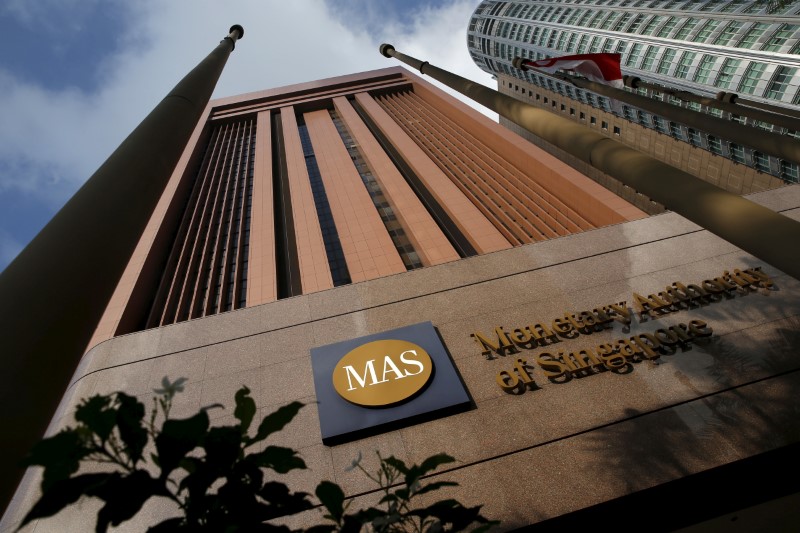 © Reuters. FILE PHOTO: A view of the Monetary Authority of Singapore building in Singapore
© Reuters. FILE PHOTO: A view of the Monetary Authority of Singapore building in SingaporeBy Masayuki Kitano and Aradhana Aravindan
SINGAPORE (Reuters) – Singapore’s central bank tightened monetary policy for the first time in six years on Friday, saying the city-state’s economy should continue to grow, even as it acknowledged risks from a possible escalation of U.S.-China trade tensions.
The Monetary Authority of Singapore (MAS) said it would slightly increase the slope of the Singapore dollar’s policy band from zero percent previously, while keeping the width and mid-point of the band unchanged.
“This policy stance is consistent with a modest and gradual appreciation path of the nominal effective exchange rate policy band that will ensure medium-term price stability,” the MAS said.
The central bank added that Singapore’s economy should continue on a steady expansion path in 2018, but also pointed to potential risks from a U.S.-China trade spat.
“An escalation of the US-China trade dispute remains possible, and if it occurs, will have significant consequences for global trade,” the MAS said.
Official data released on Friday showed Singapore’s trade-reliant economy grew 1.4 percent in the first quarter from the previous three months on an annualized and seasonally adjusted basis. The median forecast in a Reuters survey was an expansion of 1.0 percent.
Gross domestic product expanded 4.3 percent in the January-March quarter from the same period a year earlier, matching the median forecast in a Reuters survey.
The Singapore dollar edged higher after the policy decision and GDP data, and was last up about 0.1 percent at S$1.3102
“It’s really more meant to be a pre-emptive move just to take into account that core inflation is trending a bit higher between this year and next year,” said Selena Ling, Head of Treasury Research and Strategy at OCBC.
Ling said the tone of the statement sounded fairly cautious, adding that she did not think the MAS would need to tighten policy again at its next semiannual decision due in October.
The MAS manages monetary policy through exchange rate settings, rather than interest rates, letting the Singapore dollar rise or fall against the currencies of its main trading partners within in an undisclosed policy band based on its nominal effective exchange rate.
The central bank has kept the appreciation rate of the Singapore dollar’s policy band at zero percent since April 2016, in what the central bank describes as a “neutral” policy stance.
Twelve of 19 analysts in a Reuters survey predicted the MAS would tighten monetary policy this month by slightly increasing the appreciation rate of the Singapore dollar’s policy band from zero percent.
The remaining seven analysts expected the central bank to keep its policy-settings unchanged.
At its last policy review in October, the MAS changed the wording of its statement about maintaining its neutral policy stance, a shift that analysts said created room for the central bank to tighten policy in 2018.
Fusion Media or anyone involved with Fusion Media will not accept any liability for loss or damage as a result of reliance on the information including data, quotes, charts and buy/sell signals contained within this website. Please be fully informed regarding the risks and costs associated with trading the financial markets, it is one of the riskiest investment forms possible.
Source: Investing.com

























